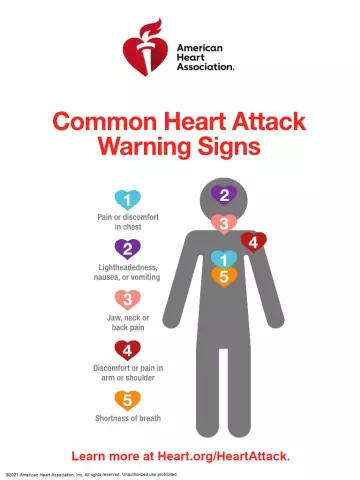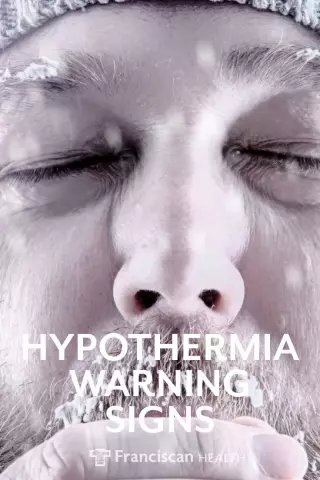- Author Rachel Wainwright [email protected].
- Public 2023-12-15 07:39.
- Last modified 2025-11-02 20:14.
First aid for sprains
Ligaments are bundles of connective tissue fibers, the task of which is clear from their name - they bind together the tissues of bones and joints. It is a very strong and flexible mechanism, but even it can be damaged if inadequate force is applied.
As a result of an injury, not only a sprain of the ligaments can occur, but also their partial or complete rupture. Sprains can be treated with home remedies, but if a rupture occurs, medical attention is needed. But since it is difficult to independently determine the nature of the injury immediately after the injury, it is advisable for the victim, after providing first aid, to go to the emergency room or trauma department of the hospital to take an X-ray.
Causes and signs of sprain
Most often, the ligaments of the joints of the legs are stretched - the ankle and knee, in third place - the ligaments of the elbow joint. Trauma always occurs during physical activity - running or jumping. One of the most common reasons is abrupt movements in a "cold" state in athletes, often the cause of ankle sprain is uncomfortable shoes, especially high and unstable heels in women.
Ligament sprain is characterized by intense pain that occurs immediately after the traumatic movement, weakness of the muscles responsible for movement in this joint, the appearance of edema and sometimes the formation of a hematoma (subcutaneous hemorrhage or, simply put, a bruise). The pain in the limb increases with movement.
First aid for sprains
The main task in providing first aid is to create rest for the injured limb and relieve pain.
To this end, the following must be done:
- Eliminate movement in the injured limb. This should be done so as not to aggravate the injury, as well as in order to avoid excessive pain;
- Apply cold to the stretch site. This can be an ice pack, a bottle of water from the refrigerator, or any other cold item. Such a measure will help to avoid severe edema and the appearance of hematoma;
- Fix the injured limb in the area of injury. A special elastic bandage is best suited for this purpose. You can do this with a regular bandage, securing it with a compression tubular bandage;
- Give the victim anesthetic. Any over-the-counter analgesic is suitable for this.


As a rule, these measures are sufficient. An indicator that everything was done correctly is the reduction in pain.
Further treatment consists of resting the injured limb for two days. During this time, pain and swelling usually subside. After two days, movement in the limb should be restored, but this must be done gradually, loading the limb not at full strength. All functions are fully restored within two to three weeks.
Situations when medical attention is required
Sprains are not too serious an injury, and if treatment is given correctly and the recommendations are followed, there are usually no consequences.
However, it happens that you still cannot do without medical help. As a rule, this happens if the victim did not immediately seek medical help and underestimated the severity of the injury, if the recommendations were not followed, or if the injured limb was too early and excessively loaded.
So, first aid and home treatment for sprains is not enough if the following is observed during the first days after the injury:
- The body temperature rises;
- The pain in the injured limb increases, the restriction of mobility also persists or intensifies;
- In addition to pain, other signs of local inflammation appear: edema, redness of the skin at the site of injury, local temperature rise;
- There was no relief two days after the injury.
In all these cases, you must immediately consult a doctor.
Found a mistake in the text? Select it and press Ctrl + Enter.






